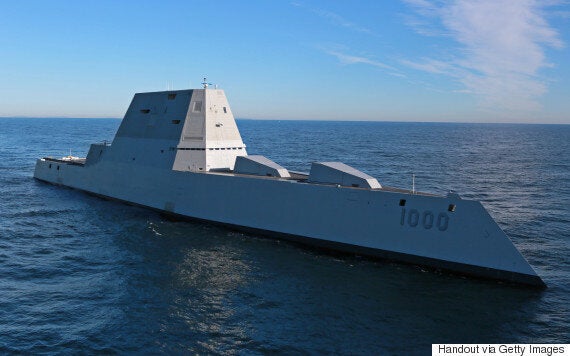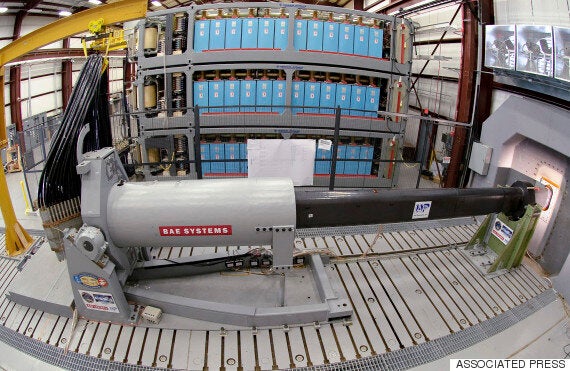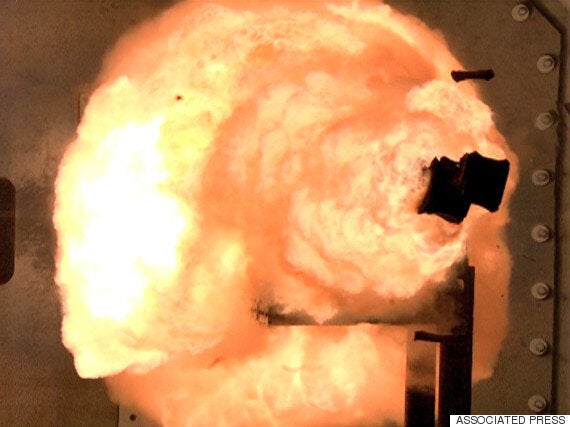The US Navy's experimental railgun has become something of an internet sensation since it was revealed that the weapon had moved from the realms of science fiction to science fact.
Capable of firing a projectile at seven times the speed of sound, the US Navy is reportedly building a fully-operational version of the weapon for its state-of-the-art stealth Zumwalt-class warship the USS Lyndon B. Johnson.

The railgun would be installed on the US Navy's new state-of-the-art Zumwalt-class destroyer.
The electromagnetic weapon was due to start operational trials this year aboard a number of test ships however according to the Associated Press, Adm. Pete Fanta has pushed forward the idea of skipping sea trials and sticking it straight into operation in 2018.

Developed by BAE Systems, the US Navy believes this weapon will become the ultimate low-cost replacement for conventional missiles.
It replaces the conventional explosive method of firing a bullet for cold, hard technology. Using the magnets the weapon is able of slinging a 'slug' at speeds up to Mach 7 with pinpoint accuracy.
Powered by a 'pulse' firing system that's now no bigger than a packet of cigarettes, the gun will soon feature a repeating action allowing it to fire multiple projectiles per minute.

The slug is propelled by electromagnets over huge distances without ever losing accuracy.
BAE Systems claim the final weapon will have an astonishing range of 110-miles.
Designed as land-attack ships, the Zumwalt-class is a perfect testbed for the weapon as its new Rolls Royce turbine generators produce 78 megawatts of electricity, more than enough power needed to fire the weapon.
SEE ALSO:
It also features a brand-new operating system which allows it to test and utilise more advanced weaponry than conventional warships.
Then of course there's the small fact that it's a stealth warship, utilising a bold new design which reduces the radar impact of the ship dramatically.